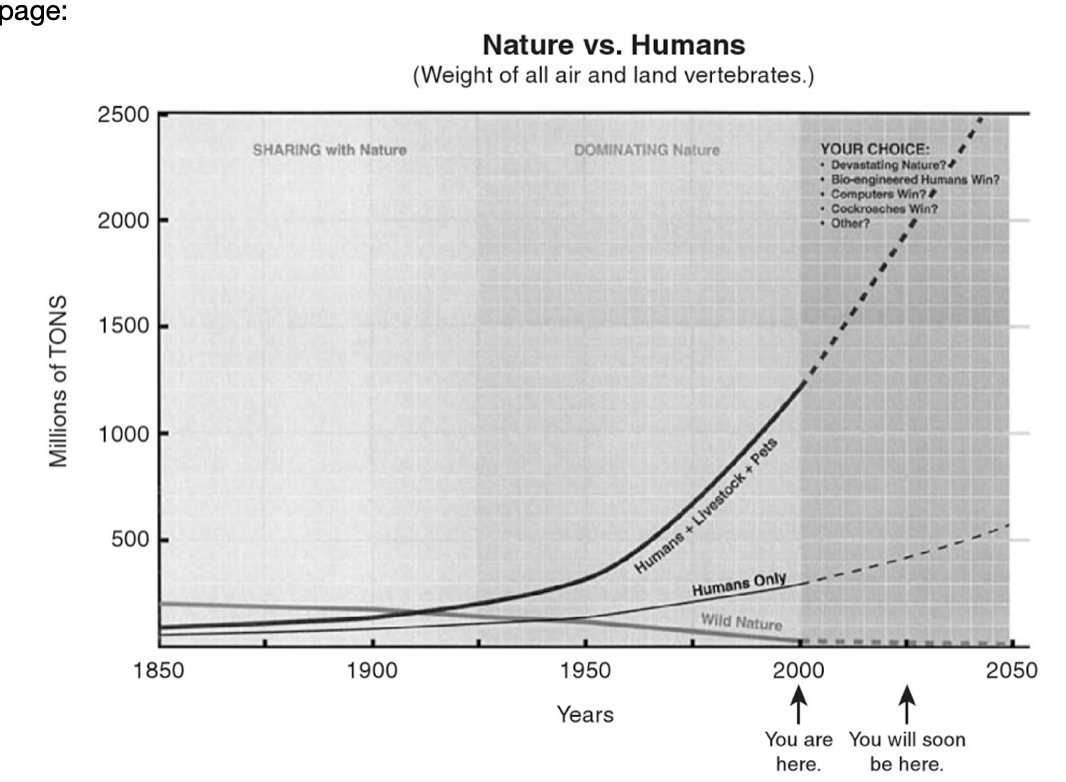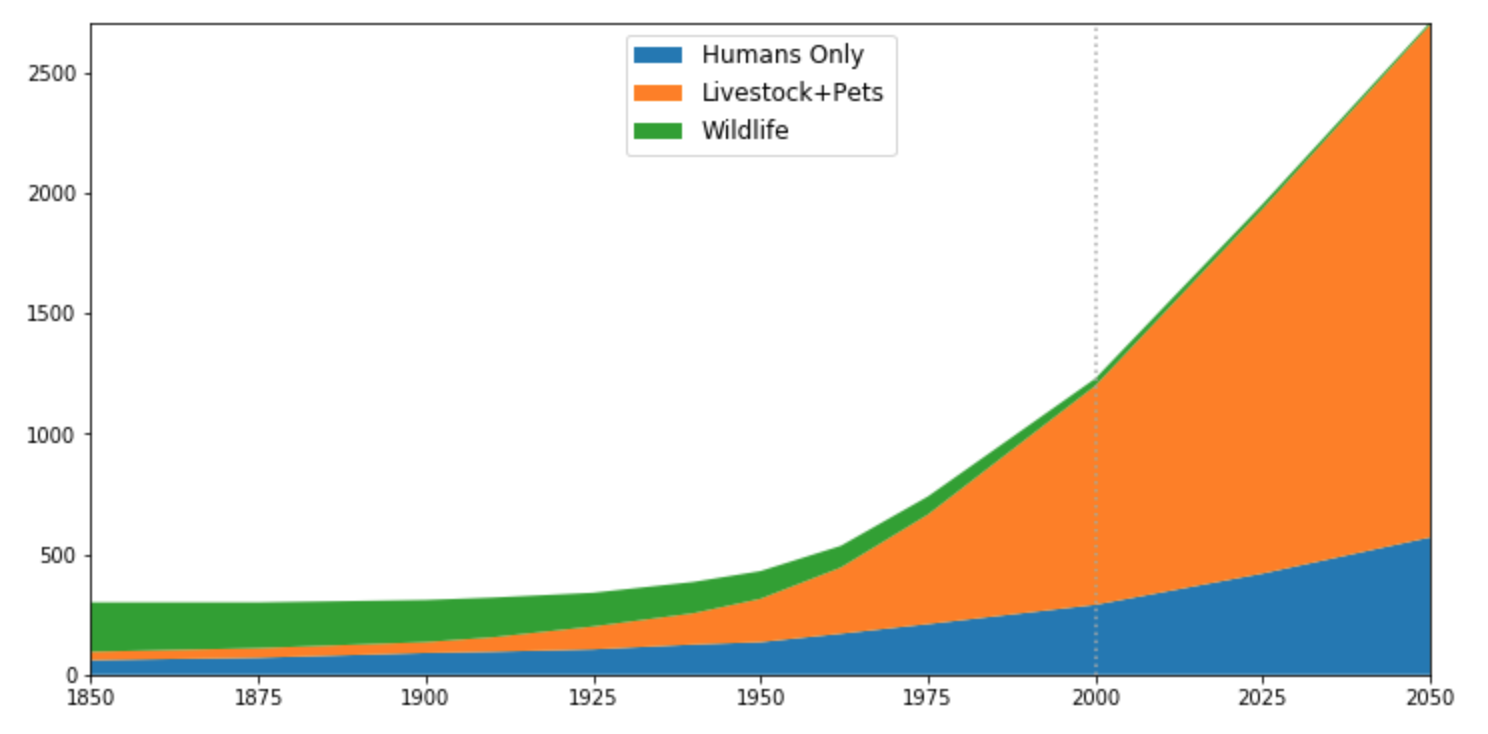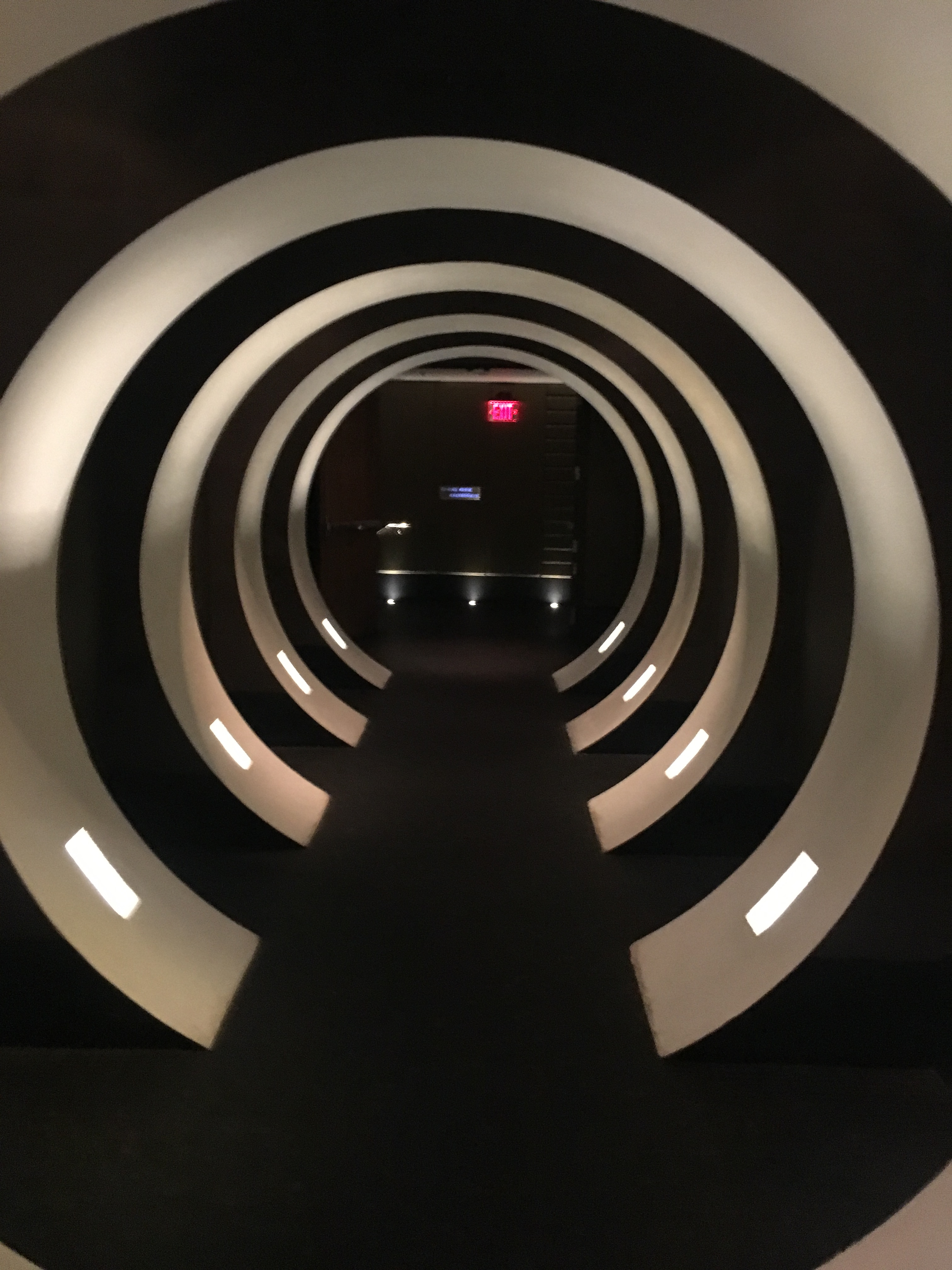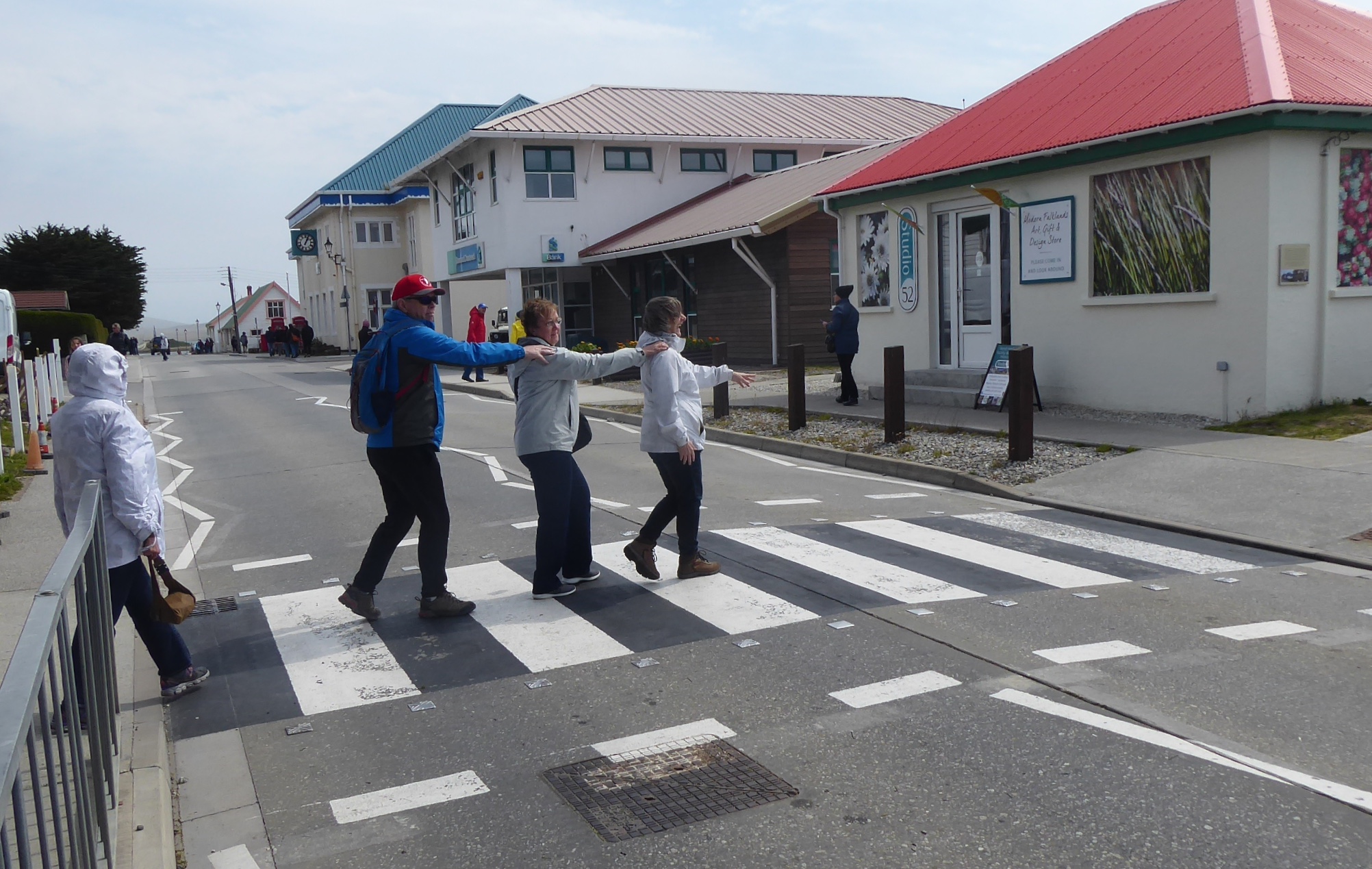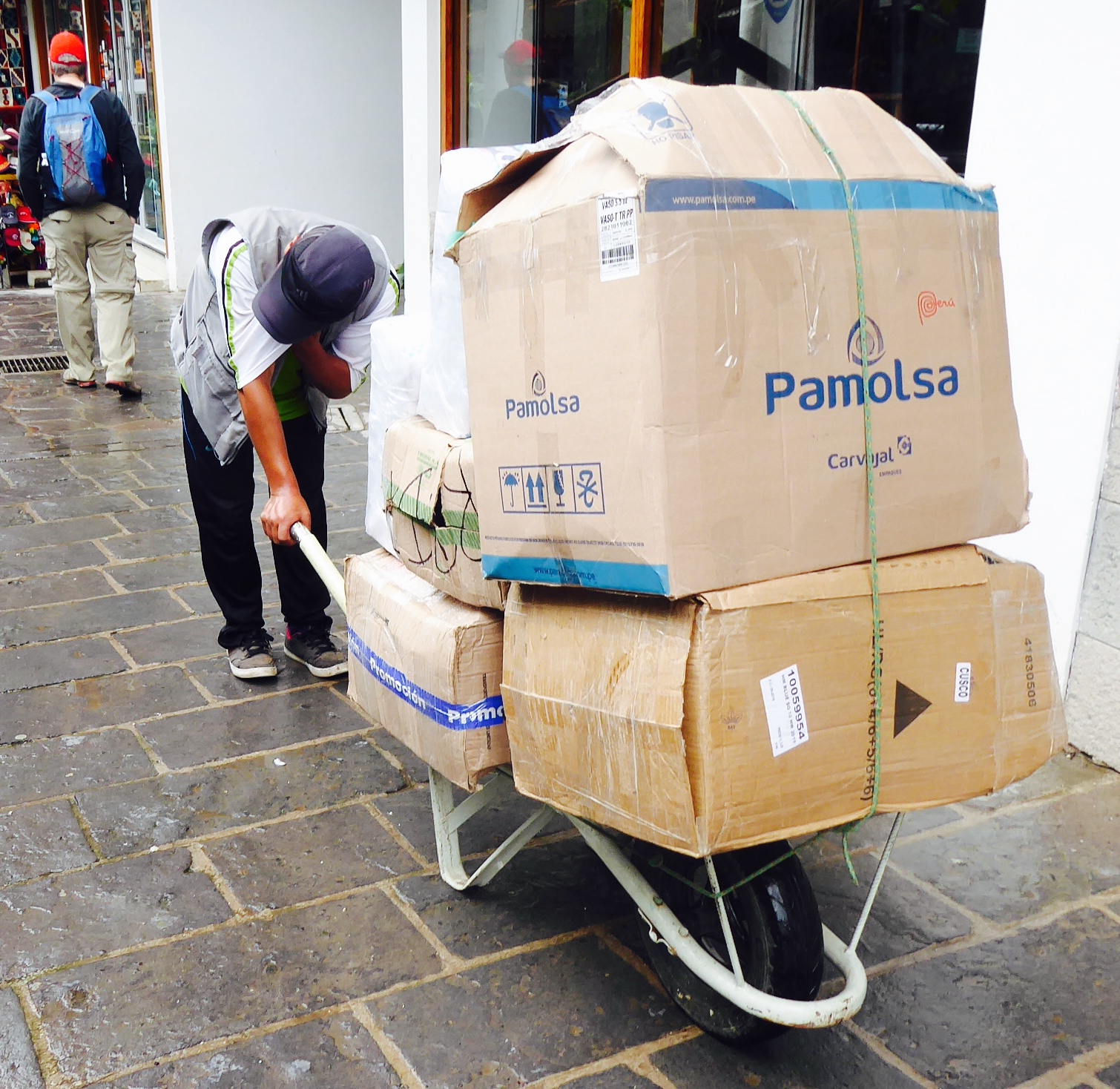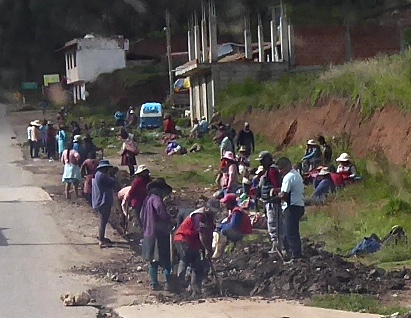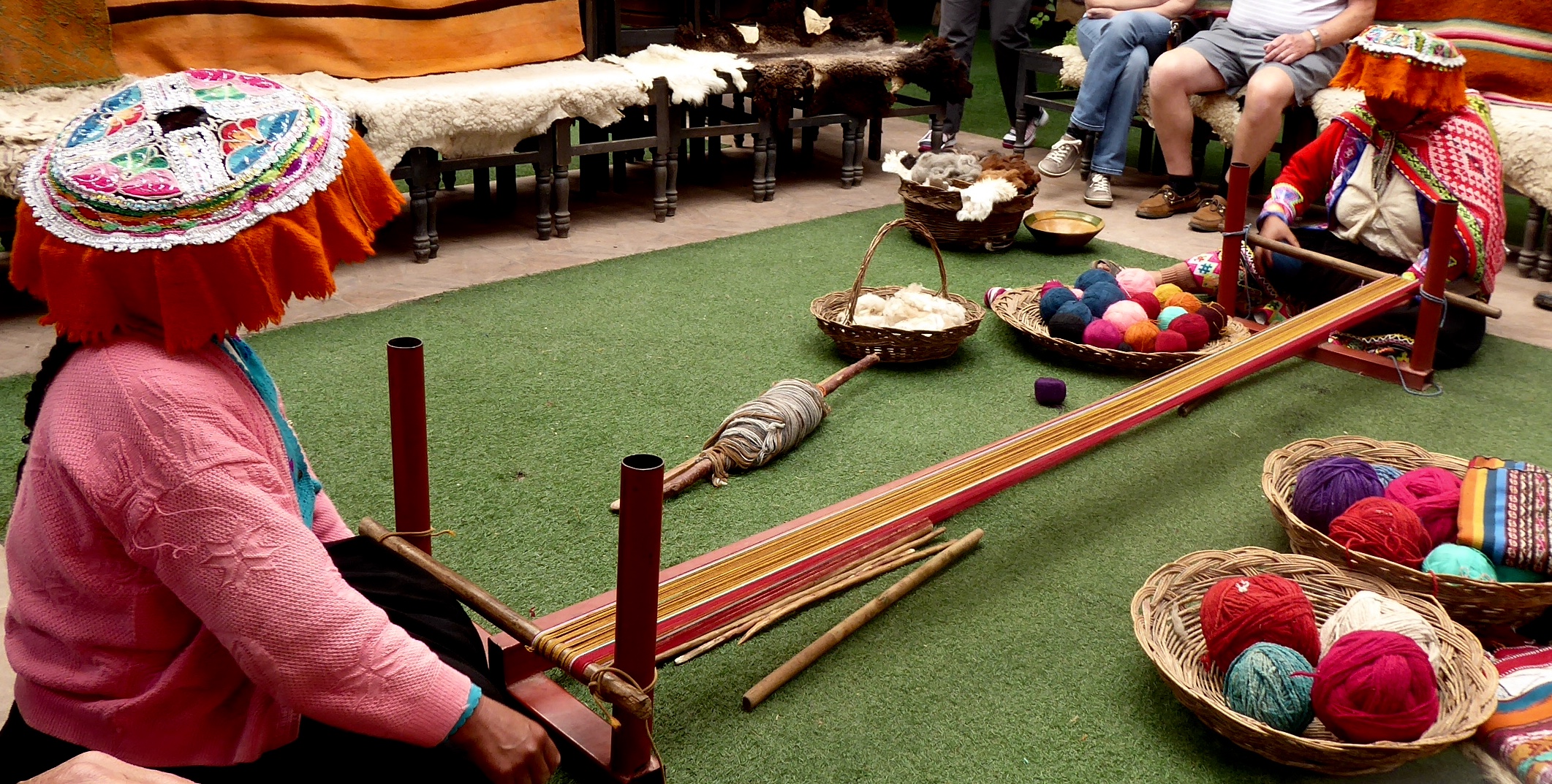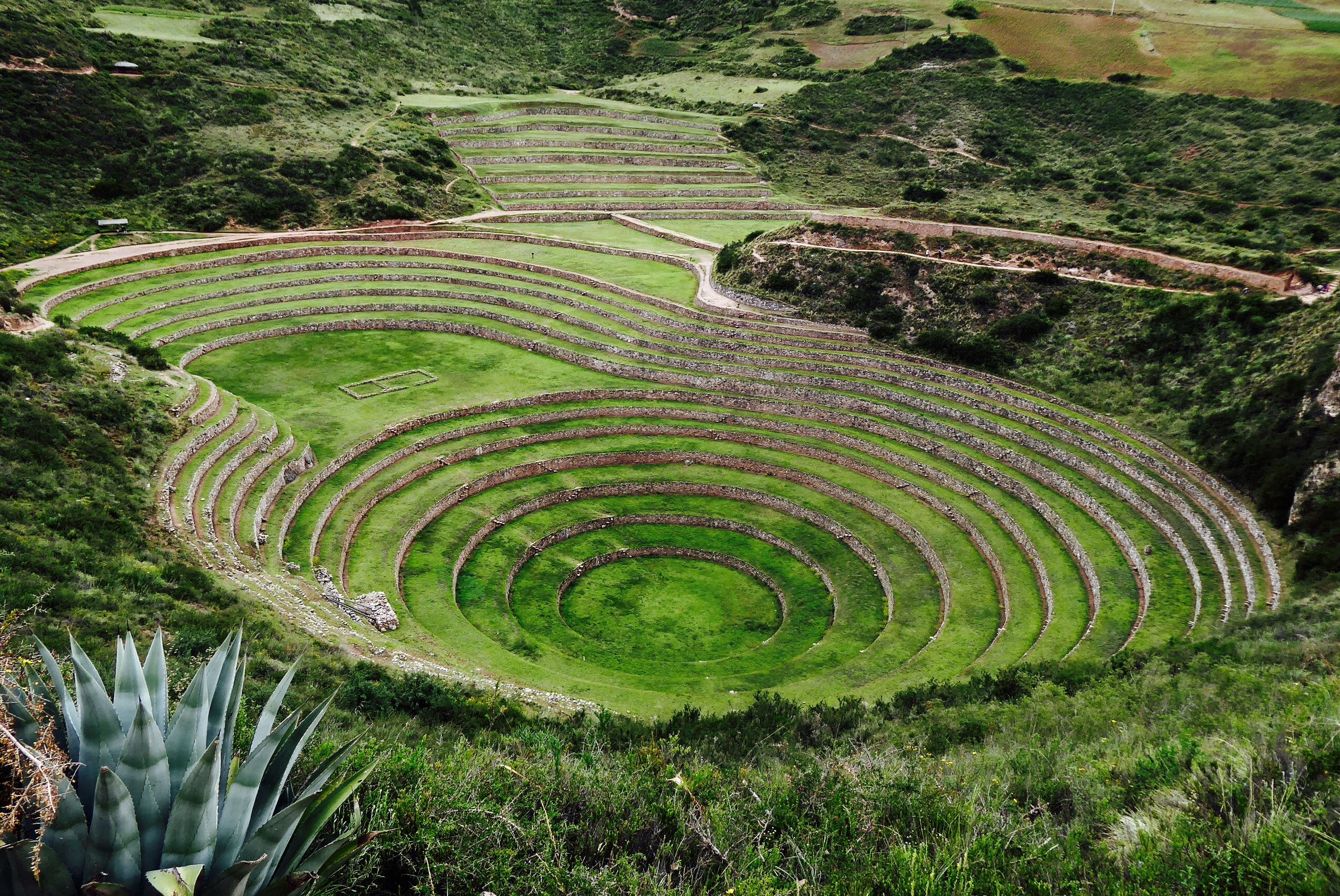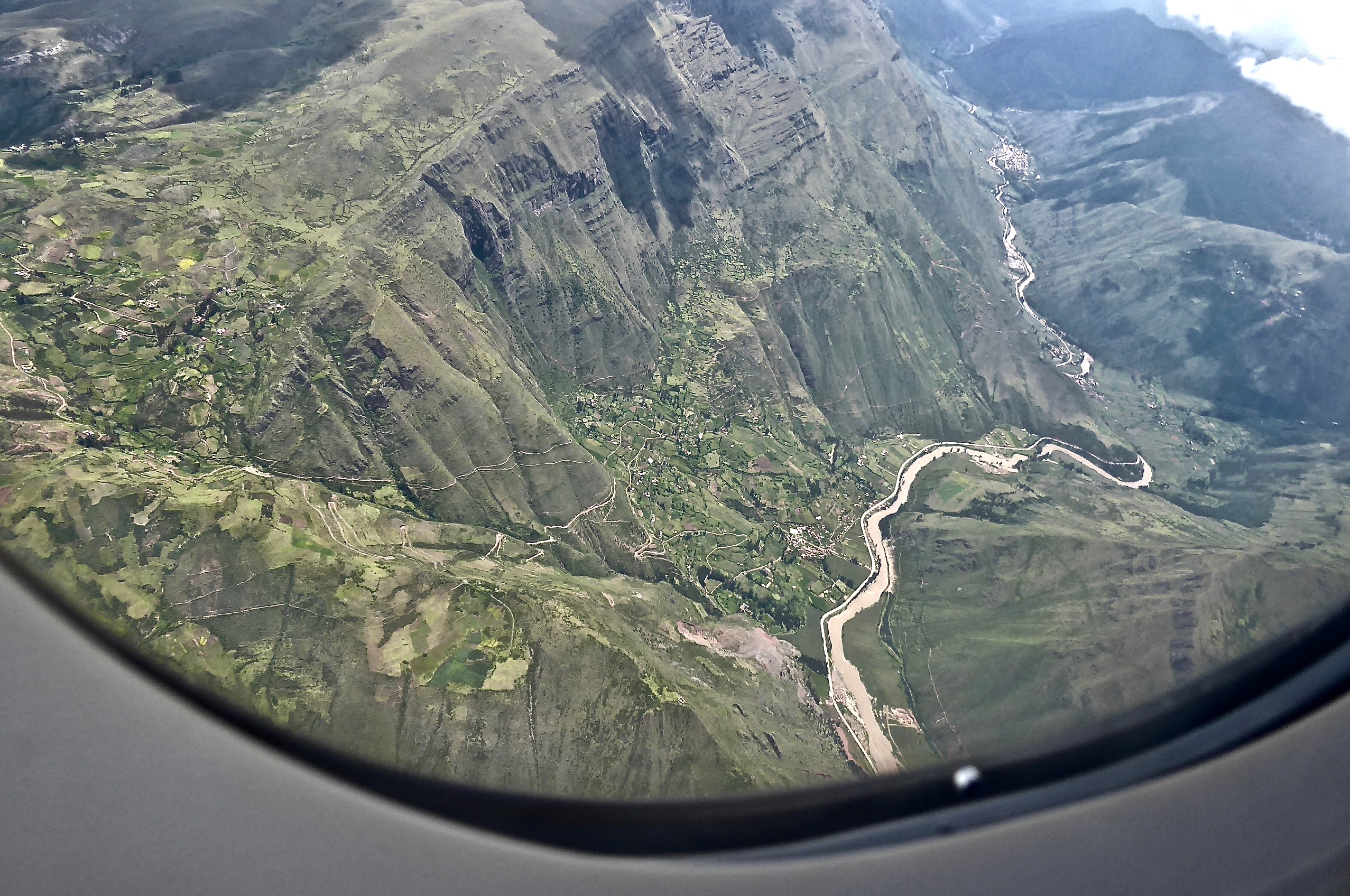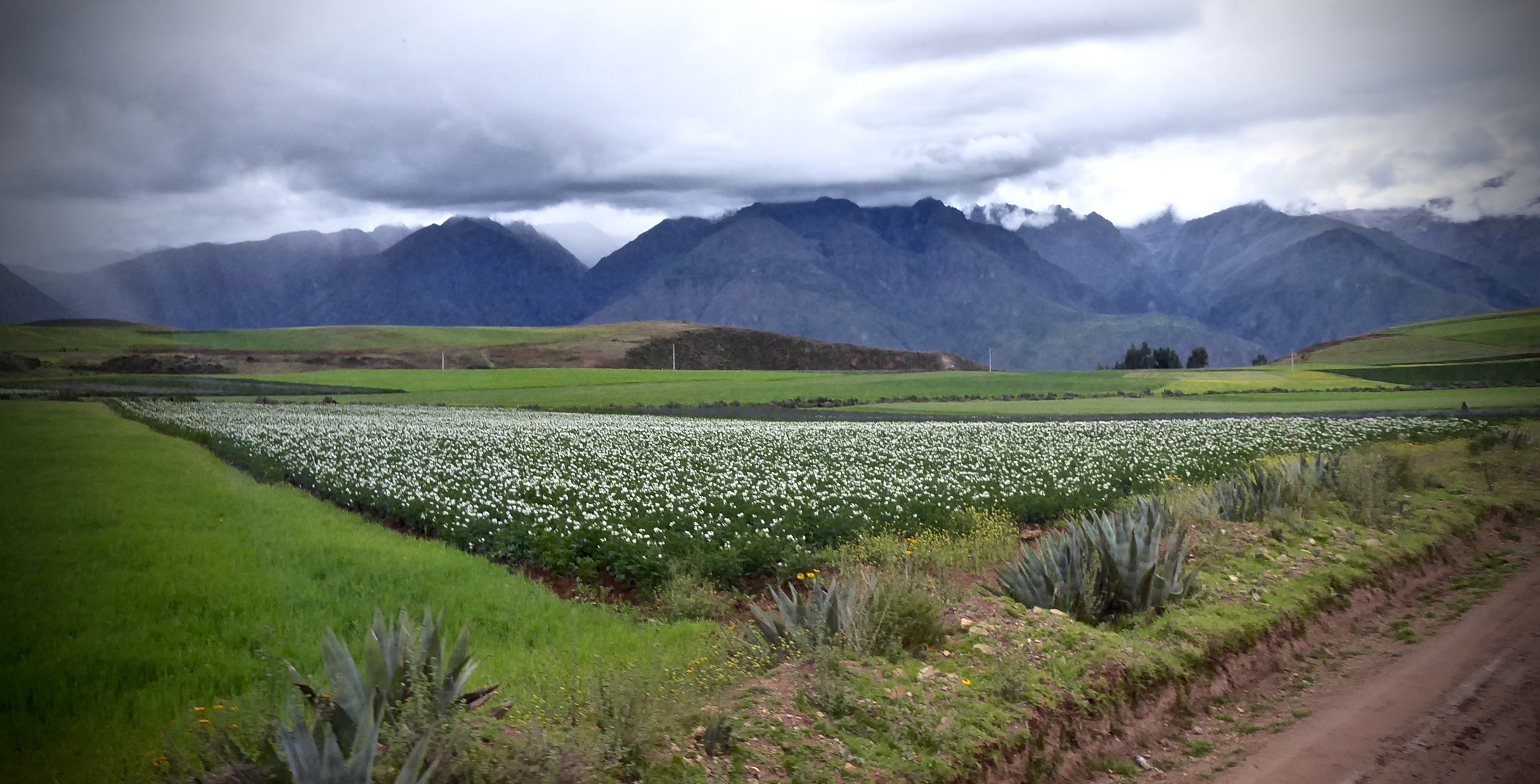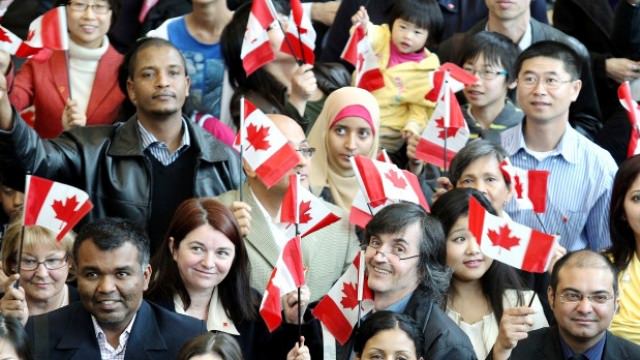The MacCready Explosion
The MacCready Explosion
Each day as I read, write, and listen to podcasts and debates, I came across this idea on Ted Talks, The MacCready Explosion. It came up when researching a Green Party article, and it struck me as having considerable potential when assessing what is happening on our planet.
Many have heard the dire reports about species extinction and of the perma-frost being in serious decay, but have you thought about livestock and how that species affects global warming? The idea, of course, relates to the title of this post and is embedded in the following short introduction.
Culture as a Major Transition in Evolution
D.C. Dennett
Center for Cognitive Studies, Tufts University, Medford, Massachusetts 02155
Excerpt:
According to calculations by Paul MacCready (1999), at the dawn of human agriculture 10,000 years ago, the worldwide human population plus their livestock and pets was ~0.1% of the terrestrial vertebrate biomass. Today, he calculates, it is 98%! (Most of that is cattle.) His reflections on this amazing development are worth quoting:
Over billions of years, on a unique sphere, chance has painted a thin covering of life—complex, improbable, wonderful and fragile. Suddenly we humans . . . have grown in population, technology, and intelligence to a position of terrible power: we now wield the paintbrush. (MacCready 1999, p.19).
Some biologists are convinced that we are now living in the early days of a sixth great mass extinction event (the “Holocene”), to rival the Permian–Triassic extinction ~250 million years ago and the Cretacious–Tertiary extinction ~65 million years ago. And because, as MacCready puts it so vividly, we wield the paintbrush, this mass extinction, if it occurs, would go down in evolutionary history as the first to be triggered by the innovations in a single species.
Compared to the biologically “sudden” Cambrian explosion, which occurred over several million years ~530 million years ago, what we may call the MacCready explosion has occurred in ~10,000 years, or ~500 human generations (of course, thousands of prior generations were required to set up many of the conditions that made this possible).
There is really no doubt, then, that it has been the rapidly accumulating products of cultural evolution—technology and intelligence, as MacCready says that account for these unprecedented transformations of the biosphere. So Maynard Smith and Szathmary (1995) are right to put language and culture as the most recent of the “major transitions of evolution.”
This is a most astounding revelation that likely accounts for much of that which we now call “climate change” or “global warming”. We strongly suspect these changes are related to human activity, yet we don’t know to what extent we can mitigate the outcomes. To this point, we seem focussed on fossil fuels as a major culprit, yet I don’t know how much we have considered other sources.
That being stated, if climate change is largely caused by human activity, and I’m certain it is, I choose to believe we can at least try to do something to change the outcome. To not even try seems crazy.
I think we can and it comes in the form of another paper, one by Nathan Daly, a software engineer, titled “Digging into the disappearance of nature’s land-living vertebrates.” It’s not a long read and you can skip the data contained with each of the several charts. You will see that simply reducing the number of livestock, and therefore our consumption of meat is likely to produce significant results. Given that livestock is a major contributor to greenhouse gas, that step provides a double win.
Comparing the introductory chart for his post with the one above, reveals the biggest single reduction can be made in the area of livestock. It’s somewhat harder to get rid of humans although we are well along the path of reducing our rate of growth.
Presented as ‘food’ for thought.
Cheers,
Harold
Note: I have not found any information that outlines how the author developed the data that support his conclusions so, at present, it is just another theory that seems worthwhile pursuing.
(2144)
To South American by Linear Accelerator
Uber has the above Molecular Transporter located in the Best Western in Richmond. A neat machine that not only transports but can also do DNA sequencing as well as give you a complete medical assessment while en route. You simply fill out a checklist. Photos in FB Post
Heading to South America
This is the first time we have traveled using a Molecular Transporter, a system developed by UBER with one unit situated just outside the Vancouver Aiport. The neat thing about this type of transportation is the ability to experience all the real-time activities you might see and feel when travelling in one of those outdated stretch bodied commercial jets. I have highlighted a few of our experiences while en route to Buenos Aires via Houston and Miami.
(149)
The Falkland Islands
For Lynn, Esther and Garth, this was not exactly Abby Road, but they tried. One thing for certain, the Falkland Islands are British to the core.
(Check out the Slideshow (2.41 minutes) in the footer)
Links to other Posts
A South American Adventure The introductory Post
Peru, A Different Perspective: Includes Slideshow
Peru and the Inca: Back to the Future Inca Agricultural Research
A Long Day, A Hard Life: Comparisons between Peru and Canada
This post developed from an earlier Facebook entry.
While in the Falklands I met a few people in the local Constabulary (The Royal Falklands Police) some of whom were retired police members from other Commonwealth countries (mainly Britain). A few traveled to the Falklands in order to take on a two-year assignment. While a few will likely return, others are there to stay. I was fascinated by the mix of old and new in the department HQ, as it was much like the department where I spent my thirty-year career.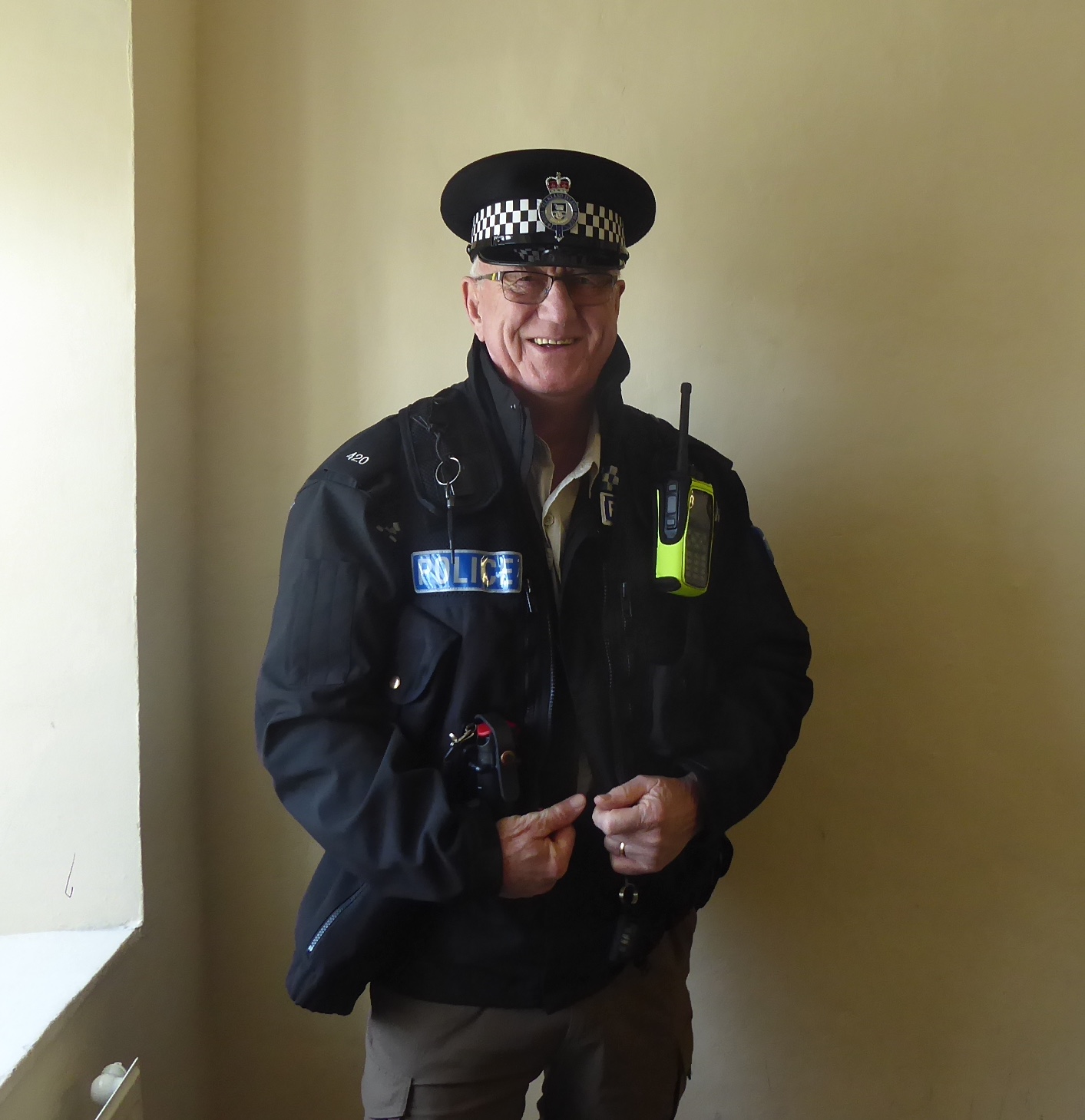
Lynn encouraged me to consider applying as she stated she would be more than happy to move to the Falklands for a couple of years. Given the friendly people and a climate not all that different from our home here in Victoria, it seems certain we would love the place and its people. If I was a decade younger, and without as many irons in the fire as here in Victoria, it is something I would consider. Oh, and it felt good to be back in the harness. Of the many things I loved about being in the service, was walking the street in uniform and greeting people. Ah, perhaps in the next life the opportunity will arise.
What it means to be a Falklander
Even though the permanent resident population is small (3400) it operates as a Parliamentary Dependency under a Constitutional Monarchy. The people I spoke to (police, fire, ambulance) left me with the impression the Falklands War helped the Islanders to coalesce as a country with purpose. I was told that prior to the war, they pretty much existed without seeing themselves with a collective purpose and a vision for the future, other than being British.
One of the downsides in the aftermath of the war is the acrimony that continues with Argentina. The result, most trade, and essential needs are met by traveling to Chili, or Uruguay, their nearest friendly neighbors, and, if necessary, to Britain, which, for a return trip, is over well over half a world away (26,000 km).
With only one flight in (and out) each week, the country remains relatively isolated. Even though the permanent population is small, they have excellent public facilities, with schools, recreation, businesses, etc. being as good or, in many cases, better than you might find in many small towns in Canada. I suppose that’s why temporary workers coming to the country qualify for many perks (vehicle, housing assistance, etc.) as that helps to make their journey doubly worthwhile.
While specialized hospital care and advanced treatment facilities are limited, the government provides free transport and pays all the costs of those who must travel out of the country for treatment. We heard of one resident who has been confined to a hospital in England for over a year.
Tourism and Employment
With over 55,000 cruise tourists each year and a further 1,400 land-based travellers, the Islands are always in desperate need of full and part-time employees, across the spectrum, from labour to professional. If I was a young person (professional or otherwise) and wanted a change, I would certainly look at the Falklands as a place to do something very different, particularly if they wished to get away from the rat race of a big city.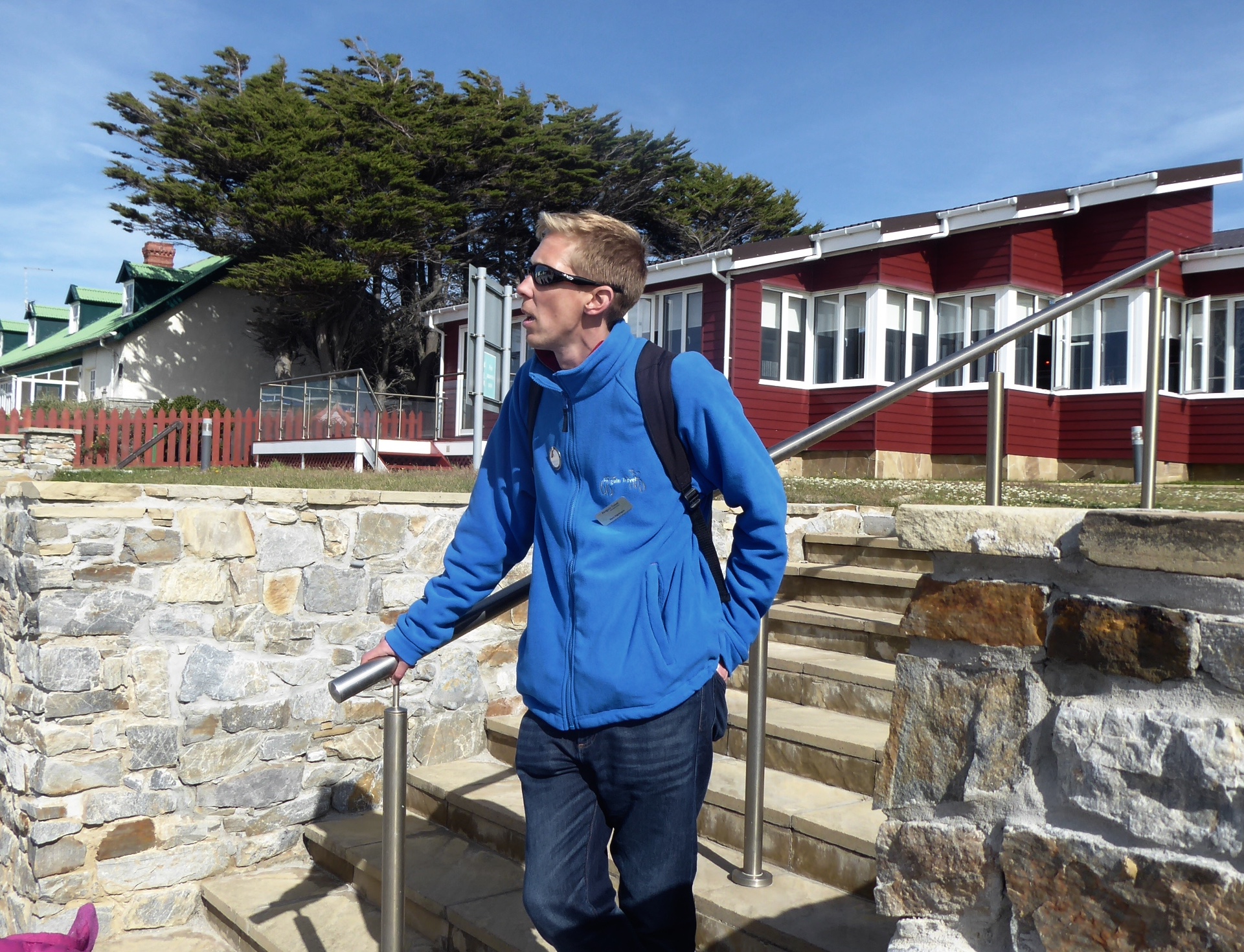
The young man in this photo (our tour guide) came to the Falklands with his bride and they now have their first child (born on the Islands). They intend on returning to England in a couple of years, but I wonder if they will.
I think she is employed as a teacher and he as a tour guide during the season and in other jobs in the offseason. I sense they both love life on the Islands and may well decide to stay.
What caught Lynn and Esther’s attention was the number of craft shops. I rather expect the two of them, the crafters they are could make a reasonably good living by creating in the winter and selling to the tourists during the short tourist season.
Now, a bit more about the weather. First, we are told the wind never stops and, in addition, it is likely always a bit chilly. If you are a sun and sand lover, the Falklands is probably not a good choice. While, as mentioned, the range in weather is much like Victoria, in that part of the Atlantic (12oo kilometers from the Antarctic Peninsula), and a stone’s throw from the tip of South America, you are close to a stretch of water that goes down in the books as one of the most dangerous on the planet.
As large cruise ships cannot dock, passengers must travel to the Island by tender and while the weather was moderately good on our trip, our tender was still handily tossed about as evidenced by at least a couple of folks becoming rather seasick. In the footer, I have added a bit more information about the Falklands from my friend Wiki.
Following is a short slideshow of our ever so short visit.
Song: Welcome to my Little Corner of the World
by Connie Smith (a 1960 Country Hit)
A bit more background from Wiki:
The Falkland Islands (/ˈfɔːlklənd/; Spanish: Islas Malvinas, pronounced [ˈislas malˈβinas]) is an archipelago in the South Atlantic Ocean on the Patagonian Shelf. The principal islands are about 300 miles (483 kilometres) east of South America‘s southern Patagonian coast, and about 752 miles (1,210 kilometres) from the northern tip of the Antarctic Peninsula, at a latitude of about 52°S.
The archipelago, with an area of 4,700 square miles (12,000 square kilometres), comprises East Falkland, West Falkland and 776 smaller islands. As a British overseas territory, the Falklands have internal self-governance, and the United Kingdom takes responsibility for their defence and foreign affairs. The Falkland Islands’ capital is Stanley on East Falkland.
Controversy exists over the Falklands’ discovery and subsequent colonization by Europeans. At various times, the islands have had French, British, Spanish, and Argentine settlements. Britain reasserted its rule in 1833, although Argentina maintains its claim to the islands.
In April 1982, Argentine forces temporarily occupied the islands. British administration was restored two months later at the end of the Falklands War. Most Falklanders favour the archipelago remaining a UK overseas territory, but its sovereignty status is part of an ongoing dispute between Argentina and the United Kingdom.
The population (3,398 inhabitants in 2016)[7] primarily consists of native-born Falkland Islanders, the majority of British descent. Other ethnicities include French, Gibraltarian and Scandinavian. Immigration from the United Kingdom, the South Atlantic island of Saint Helena, and Chile has reversed a population decline. The predominant (and official) language is English. Under the British Nationality (Falkland Islands) Act 1983, Falkland Islanders are British citizens.
The islands lie on the boundary of the subantarctic oceanic and tundra climate zones, and both major islands have mountain ranges reaching 2,300 feet (700 m). They are home to large bird populations, although many no longer breed on the main islands because of competition from introduced species. Major economic activities include fishing, tourism and sheep farming, with an emphasis on high-quality wool exports. Oil exploration, licensed by the Falkland Islands Government, remains controversial as a result of maritime disputes with Argentina.
(406)
A South American Adventure
South America: From the Pampas of Argentina to the Peruvian Andes and
Machu Picchu: A tour of south central, South America
For a representative series of photos, Link Here)
(Note: The Falklands Islands is included on the tour, but was not included in the above map – reference the photo series for a second map)
Update: February 25, 2019. We are now back in Canada and the process of writing several short posts about our experience is underway. The post will not be written in chronological order. A list of links will be added here:
Peru, A Different Perspective: Includes 12-minute slideshow of photos taken through the windows of planes, trains, and automobiles.
Peru and the Inca: Back to the Future: Compares the science of the Inca to that taking place in the University of Victoria today.
South America: A Long Day, a Hard Life: Comparisons between South America and Canada
The Falkland Islands: Our Perceptions of the Islands.
Original
Looking for something exciting to kick off the New Year in 2019? Yes? Well, we invite you to join Garth and Esther Dunn, Lynn and Harold McNeill and a host of like-minded adventurers on a 3-4 week air, sea, coach, and rail tour of south-central South America and the Falklands. Highlight – Machu Picchu!
(962)
South America: A Long Day, A Hard Life
A long day, a hard life.
A South American Adventure The introductory Post
Peru, A Different Perspective: Includes Slideshow
Peru and the Inca: Back to the Future Inca Agricultural Research
The Falkland Islands: Our Perceptions of the Islands.
This post seeks to compare everyday life in rural and small-town Peru to our lives in Canada. While I think people in Peru are generally happy with their lives (in terms of family, friends, and neighbours), life does look to be far more difficult than in Canada. It makes me wonder why, in Canada, we seem to complain about the least little thing when our standard of living and level of privilege appears to be considerably higher than in Peru.
1. To what extent does luck play a role in our lives?
A man about my age (late 70s), pushed what looked to be a backbreaking load along a street in Aguas Calientes (I), the last small town before Machu Picchu. He stopped and leaned over breathing hard. After resting a few moments, he straightened, stretched, and with gritty determination grabbed the handles of his wheelbarrow and continued.
As we passed, our eyes met, he nodded and we smiled. While he was obviously weary, the smile and sparkling eyes suggested a happy man. As he continued along his uphill path, I continued down taking more photos of life in small-town Peru. A few minutes later, I met another man pushing a similar barrow full of goods (photo in the footer), and he too wore a happy smile accented with sparkling eyes. We also exchanged smiles and passing nods. It looked to be a tough life for the two men their later years.
Later that day, while passing through another small town, a group of townspeople (photo taken from our bus as we drove through) was cleaning (or rebuilding) a drainage ditch. We are told by our guide that everyone in small towns sprinkled across rural Peru, have a standing obligation to help build, then keep public works systems clean and functioning. It looked to be a tough way to spend the weekend, but there is also the aspect of a community working together to make life better for everyone.
This photo shows only one part of a large group of people spread over two or three blocks on the edge of their village. They were working to build or repair a drainage system, an essential part of these high mountain communities (we were outside Cuzco at about 12,500 feet at the time).
The photo below, along with a slideshow) provides a glimpse of a group of women, ancestors of the Inca, who, with the help of a National Geographic grant, started a weaving business a few years back. They now have a thriving operation that caters to an increasing number of tourists passing through their village of Chinchero, a community of about 20,000 Quechua (catch ur ah) speakers, located on a 12,500-foot plateau a few miles northeast of Cuzco.
While they work exceptionally hard (by our standards at least), their efforts provide only a modest living for their families. A full outline of their business venture is described in a National Geographic article of some years back. Such is the working life for many ordinary men and women in Peru and other South American countries.
These women may work several weeks creating one table cloth or a day creating three or four little belts that are sold for $2.00 each.. They may sell one or two belts per day and a table runner every week or so. It may be weeks before they sell one of their intricately woven table cloths. Every part of the weaving process uses natural products of Peru including the dyes which are handmade on site. (Chinchero Cultural Centre)
WEAVERS SLIDESHOW
Think about this. If we were dealt different cards in life, we could be any one of these men or women, and they could be us. Whether we carry a heavy load in the third world, or we lay back watching a big screen TV in Canada (a smartphone tucked by our side) a good part of the reason we are where we are, is based on the luck of our birth.
(312)
Peru and the Inca: Back to the Future
Moray Archeological Site: These concentric rings, each raised by a height of four feet, reach a depth of 100 feet. The rings and partial rings create twenty-five distinct climatic conditions. This arrangement allowed the Inca, using scientific methods, to develop seed crops best suited to many different climatic conditions across the nation. (1)(2)
South America Post Links (these South America posts are not written in the order of travel)
A South American Adventure The introductory Post
Peru, A Different Perspective: Includes Slideshow
Peru and the Inca: Back to the Future Inca Agricultural Research
The Falkland Islands: Our Perceptions of the Islands.
Back to the Future: How the Inca Nation Lead the Way
There are many things to be learned by visiting civilizations past and it’s doubly so with the Inca Nation. Although we only had seven days in Peru, it did not take long to realize just how influential the Inca people were, both in history and in the Peru of today.
In history, the Inca left behind cultural, religious and scientific legacies that continue to astound scientists, historians, and visitors to this very day. In the present day, and since the near-destruction of the nation in the 16th Century, ancestors of the Inca continue to rebuild the historical sights, traditions and religious practices which served their ancestors so well. It is a history about which our world can learn much.
(2234)
Peru, A Different Perspective
(Click to open to full size)
(A 12-minute slideshow can be linked in the footer)
This photo, taken while en route to Cusco, along with several others in the slideshow linked below, was taken through the windows of buses, trains, and aircraft as we traveled around Peru. As you can see in the above photo, the rivers, roads, and towns very clearly come into view (click photo to open to full size)
Surprisingly, with a little touchup work to remove some of the reflections, the photos provide some insight into the travel challenges faced by Peruvians as they go about their daily lives.
South America Post Links
A South American Adventure Introductory Post
Peru and the Inca: Back to the Future Inca Agricultural Research
South America: A Long Day, a Hard Iife Comparisons to Canada
The Falkland Islands: Our Perceptions of the Islands.
Peru, a view through the glass of planes, trains, and buses.
As we flew to Cusco, the religious centre of the Inka (original spelling) culture and the gateway to Machu Picchu, breaks in the clouds presented our first opportunity to view Peru from a 32,000-foot perspective. The enhanced introductory photos that serve as the lead in this slideshow, reveal the rugged terrain where people most certainly live and work at the top of the world. That world ranges from sea level to 16,700 feet. Eight of the ten highest mines in the world are located in Peru, with the town of La Rinconada, 30,000 residents, sitting at the 16,700-foot level, the highest town in the world.
The majority of staple crops in Peru are cultivated from 1,000 meters (3200 feet) to 3,900 meters (almost 13,000 feet) with several hundred varieties of potatoes being developed and are shipped around the world. Quinoa, another staple of Peru, is grown from about 2,300 metres (7500 feet) to 3,900 metres (13,000 feet).
Maize, another principle crop, is commonly grown to the 3,500 meters (11,500 feet) in favourable conditions. It was the ingenuity of the ancestors of the Peruvian people (the Inca’s and others) in developing crop strains that grew well under adverse conditions, that allowed them to feed the people with less than 2% of land in the country suitable for agricultural use.
“The highest altitude in the Andes at which people have resided permanently is 17,100 feet (shepherds in southern Peru) and, as temporary workers, 18,500 to 19,000 feet (Carrasco Mine, in the Atacama Desert, Chile).” (The Mountain People).
In several of the lead photos, you can discern the switchback network leading from one community to the next and when traveling by bus, we seldom covered more than a few kilometers with entering a network of switchbacks. In one photo, I happened to capture an open pit mine and in another a dust cloud that appears to be from another mine.
Later, when travelling by bus, a perplexing question arose – why were so many towns completely devoid of people. I’m not just talking about only a few people on the streets, often there was not a single a sole to be seen. Perhaps everyone left for work before we arrived (late morning) and never came home until late in the afternoon (after we left)?
“The daily life of the residents of Peru’s cities varies with social class. Relatively few of the poorer residents have good jobs within the formal Peruvian economy; often they must work two or three jobs, and they have less leisure time than other Peruvians. Such people make up the majority of the population in squatter settlements that surround the major urban areas.” (Daily Life and Social Customs)
On landing in Cusco, we had our first taste of life at 11,500 feet, and after walking a short distance from the aircraft to the departure lounge, we begin to feel the effects. It would be good to have the next two days to acclimatize.
Video: A View Through The Glass
(130)
Canada: That Which Makes us One
Diversity in Canada Has The Capacity to Inspire The World
Celebrating at a Ukrainian Christmas (1) dinner gave me pause to think about how these cultural
celebrations help to define Canada – that which makes us one. One dinner you ask? Well, it goes much deeper as it also includes coffee breaks at Tim Hortons, restaurants and the Canadian Soccer teams. It all fits into the fabric of our national identity.
1. A Ukrainian Dinner Celebration
On Sunday, January 6, 2019, Lynn and I went to dinner on the eve of Ukrainian Christmas at the home of one of my former police partners. We both retired twenty-five years ago and for years our families lived a stone’s throw from one another in West Saanich. Ukrainian Christmas was, and is, always a big celebration in their home (1). In addition to Al and Mary and their immediate family, three other couples, also long retired police members and their wives, were at the table of eighteen.
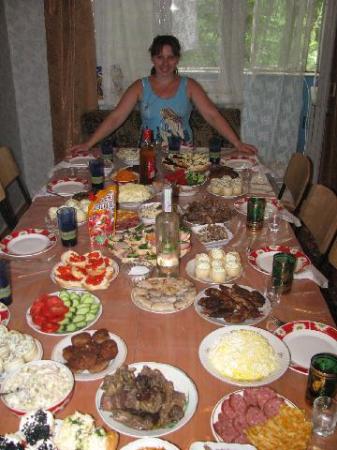 As we dined, surrounded by that uniquely Ukrainian bounty, we were not just celebrating a special event in the Gregorian calendar year, we were celebrating what it means to be Canadian. That feast and those friends served to remind us of how fortunate we are to live at peace in a mix of cultures, languages, traditions, religions, and varieties of food types that is unprecedented in the world. It is a mix that accompanies us every day, not just on special occasions.
As we dined, surrounded by that uniquely Ukrainian bounty, we were not just celebrating a special event in the Gregorian calendar year, we were celebrating what it means to be Canadian. That feast and those friends served to remind us of how fortunate we are to live at peace in a mix of cultures, languages, traditions, religions, and varieties of food types that is unprecedented in the world. It is a mix that accompanies us every day, not just on special occasions.
Photo (Web source). This table represents about half the set for our special meal. All items were prepared at home and served piping hot.
2. Tim Horton’s and McDonald’s: The coffee crowd
Earlier in the day (Sunday), I made a couple of visits to Tim Hortons at the Royal Oak Shopping Centre (2). It was, as usual, overflowing. I grabbed a seat beside an acquaintance from Syria. He and his delightful family are making their way in a new country they now call home. When he left for an appointment, I struck up a conversation with the man on my right, a person I did not know.
(300)

